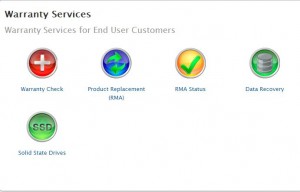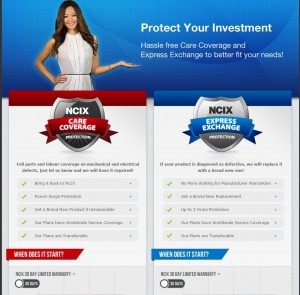We go through a fair bit of hardware here at Computers Made Simple. Sometimes that hardware doesn’t work correctly or fails after a period of time. If the item is still under warranty, we have to go through the RMA process. RMA (Return Merchandise Authority) can be confusing. Here’s what we know about it.
Last month, we had a Western Digital (WD) 2 TB hard drive fail. We spent hours and hours trying to recover as many files as we could from it, then decided to get a new drive under warranty from WD. We’ve done many RMAs in the past and every one went smoothly. This one didn’t.
The first step in any RMA process is to contact the manufacturer. This can be done by telephone or email but you can sometimes use a contact form on a website. We used the contact form on the WD website to begin the RMA process. The manufacturer must authorize the return, hence the RMA acronym. Each piece of hardware that comes back to a company must have an RMA number on it. Keep that in mind.

WD emailed us back, explaining that there were two types of RMAs. We already knew this but here’s the low-down on that. Once the company approves your RMA, you could simply send them the faulty product and they will send you a replacement. You pay the shipping one way and they pay the shipping back to you.
Alternatively, you could use the advanced RMA process. The company will charge you a nominal fee for the replacement product, then ships it to you. Once the replacement arrives, you return the faulty product and the company gives you a credit for the same amount that they charged you in the first place. In our case, WD charged us $150.00 for the drive (we only paid $69.00 for it originally) and gave us 30 days turnaround time to get the faulty drive back to them. Initially, this seemed like the best option. Oh, were we wrong!
WD now says that the 3-5 day turnaround is only good in the United States. As you know, we are in Canada. We really don’t see what the difference is here because the drive is a replacement drive, it’s not something that we purchased. Since it is being shipped as a replacement, it should sail through Customs. WD also says that we could ship the drive back to them before the new drive arrives. This means that we’ll be out the shipping costs. (As it turns out, we shipped the drive off today and will have to absorb the shipping costs ourselves.)
It is now 15 days since the drive was shipped to us from WD. Remember that we only have 30 days to get the drive back to them, right? We are in Canada, not Timbuktu. We get shipments from the United States almost every week. There is no reason on earth that a drive shipped from the U.S. would take two weeks to arrive at its destination in Canada. WD uses UPS, that might be the problem. If you are ever going to ship something, DO NOT USE UPS. The United States Postal System is far better than UPS, as are Purolator and FedEx.
The process usually is flawless. Sometimes, as in our case, something goes wrong. At that point you have several options. We took to Twitter and shouted about it there. We emailed WD several times as well. So far, 15 days into this, the drive is somewhere between WD and us.
We’ve had good experiences with Dell, with HP/Compaq and with Staples. It’s always good to check online to see what experiences other people have had. Usually tech products work very well but when they don’t, you have to go through the RMA process. Hopefully, your experience will be better than ours.
At this point in time, there are only three or four companies who make traditional, as opposed to solid-state (SSD), drives. They are Toshiba, Seagate and Western Digital with Hitachi showing up at some vendors. Many of our old drives from Samsung, Fujitsu, etc. are still working perfectly. Are WD drives reliable? Usually they are. Right now, the only thing that isn’t reliable is the WD RMA policy! It looks like Hitachi has the best warranty, 5 years. Whatever drive you get, make sure you check the warranty before you buy it.

Tip: Some vendors, NCIX is one, offer what they call “Express RMA’ as an extra-cost option when purchasing a product. On their hard drives, three years of extra protection costs under $50.00. Some products are worth this extra money, some aren’t. It’s up to you to decide. Because of the problems we’ve had with WD, we’re going to spring for this coverage on our next purchase from NCIX.
Update: According to Western Digital, the drive is held up in Canada Customs. We’re not saying that WD isn’t being truthful but we have been around international shipping since 1976 and only rarely have shipments been ‘held up in Customs’. If indeed the shipment, supposedly a whole skid of drives, is in Customs, we suspect that it’s UPS’s fault, not WD’s.
Thanks for reading! If you’ve had problems with RMAs or Western Digital, please let us know.
